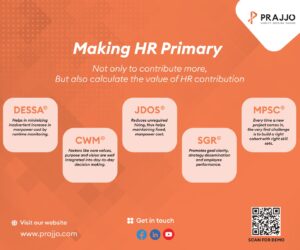Stop thinking about blue links. Seriously.
When was the last time you typed a recipe into your phone while chopping vegetables? Never! You asked a smart speaker. The game is no longer about scrolling; it’s about speaking. And when a user asks a voice assistant a question, they don’t get a list of ten options. They get one answer.
That one, single, spoken answer is the new Position Zero. Win it, and you’ve captured an entirely new channel of traffic.
This is the cutting edge of Generative Engine Optimisation (GEO) for audio. You aren’t competing for screen real estate; you’re competing for the exclusive spoken citation. To win, your content must be optimised for the zero-click, conversational environment. Your information needs to be instantly extractable, directly answerable, and perfectly formatted for a human voice.
If your team is stuck in traditional keyword strategies, you’re missing out on a massive, high-intent source of AI visibility.
Phase 1: The Conversational Content Overhaul
Voice search is pure conversation. The first step in Voice Search GEO is making sure your content sounds exactly like a helpful person.
- Identify Your User’s Natural Query
Put away the old keyword tools for a minute. Latest AI Seo Services mechanism focus on how real people frame questions. Voice queries are longer, less formal, and almost always start with question words: “What is,” “How do I,” “Where can I find,” or “Why should I.”
- Audit Your Headings: Check your high-value articles. Do your H2 and H3 headings sound like something a person would say out loud? If you have a heading that says “Lead Generation Strategies,” try making it “How Do I Generate More Qualified Leads?” or “What are the Best Lead Generation Strategies for B2B?”
- The Persona Shift: When writing, imagine you are a genuinely helpful expert speaking to a friend. The AI models heavily favor content that flows naturally as a spoken response. Ditch the corporate jargon.
- The Direct Answer Imperative
In voice search, the user isn’t scrolling. They want the answer now.
- Lead with the Answer: Every single paragraph following a question-based heading must start with a direct, clean answer to that question. This first sentence is your GEO bullseye.
- The Example: If your heading asks, “What is Generative Engine Optimisation?”, the very first sentence should be: “Generative Engine Optimisation (GEO) is the strategic process of organising digital content to maximise its selection and citation by large language models and generative AI systems.”
- Be Brutally Concise: That core answer should ideally be under 30 words. Why? Because most AI assistants cut off the spoken response after about 25-30 seconds. You have to deliver the core value instantly, or the citation is gone.
Phase 2: Technical Signals for the Spoken Word
This is where you use code to directly instruct the AI on which text it should read aloud.
- Mastering the Speakable Schema
This is your most effective tool for Voice Search GEO. The speakable Schema property explicitly tags which parts of the page are best for text-to-speech conversion.
- Target Precisely: Apply the speakable property only to the concise, direct answers you created in the conversational audit phase. Do not overuse it! Tagging too much text dilutes the signal and confuses the AI.
- Contextualise Authority: Embed that speakable property within a robust Article or QAPage Schema. This gives the AI the complete package: the perfect text to read and the definitive authority signal (date, author, trust) needed for a confident citation.
- The FAQPage and How To Power Play
These two Schema types are gold standards for voice answers because they naturally break information into structured, easy-to-read units.
- Optimising FAQs: Ensure every question in your FAQPage Schema is phrased naturally, like “Where can I find the latest pricing?” The corresponding answer must be super clean, fact-focused, and non-promotional.
- Step-by-Step Clarity: Got a tutorial? Use the HowTo Schema. AI assistants love to read out numbered steps. Make sure each step is brief, clear, and immediately actionable—no rambling.
Phase 3: Authority, Speed, and The DualRank Advantage
To win the exclusive spoken citation, the AI must have absolute confidence in your content. Since the user can’t see your beautiful design, the trust signals have to be perfect.
- Speed, Accessibility, and Trust
If your page is slow, the AI gets annoyed, and the user waits. Speed is an authority signal. Furthermore, accessibility is mandatory for voice search. Clean code, proper heading hierarchy, and structured markup make it simple for text-to-speech engines to process the information correctly and swiftly.
- The Entity Confidence Signal
Generative models must verify authority before making a citation. Your author and organisation must be established entities within their knowledge graph.
- E-E-A-T Reinforcement: Use Person and Organisation Schema to confirm your author’s credentials. Link them to external, verified sources (LinkedIn, industry directories). The AI is far more likely to cite an answer if the entity providing it is definitively recognised as an expert.
- Unified Strategy: The AI digital marketing agency like Envigo created the DualRank methodology for this exact reason. DualRank ensures that while the content is being surgically optimised for conversational structure and speakable Schema (the GEO side), the technical E-E-A-T signals required for authority are simultaneously reinforced (the SEO side). This critical dual focus is how clients consistently capture Position Zero in both screen-based and voice-based results, maximising AI visibility.
To move past just ranking and become the definitive spoken answer, you must adopt a GEO strategy focused on the ear. By reformatting your content for conversational questions, mastering the speakable Schema, and delivering instant, authoritative answers, you successfully transform your website into the trusted source the AI always cites first.





